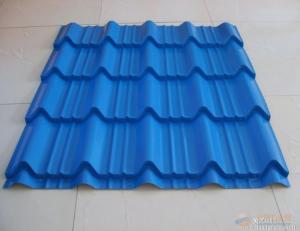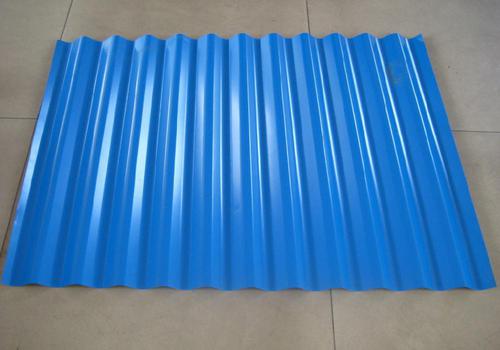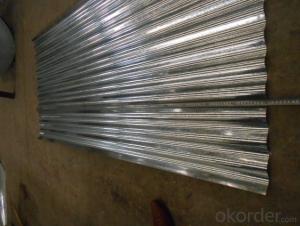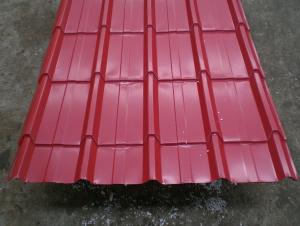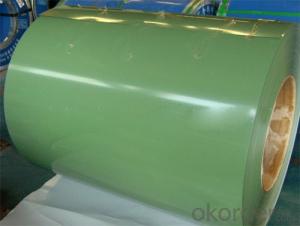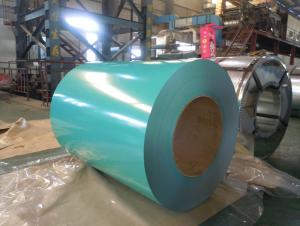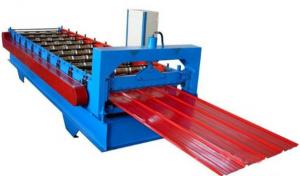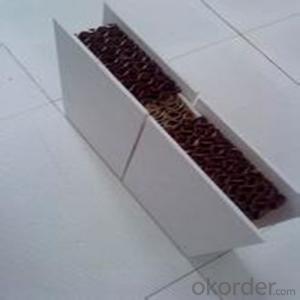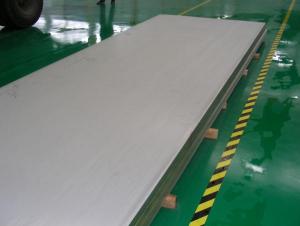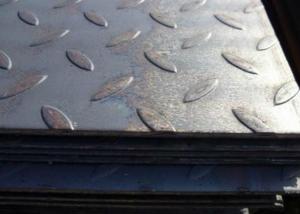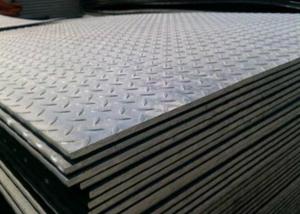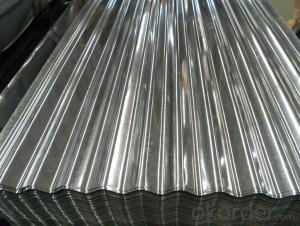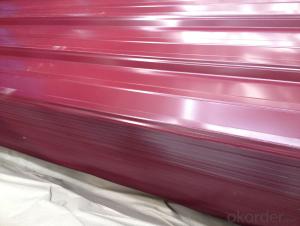Pre-Painted Galvanized / Aluzinc Corrugated Steel Sheet Royal Blue
- Loading Port:
- Tianjin
- Payment Terms:
- TT or LC
- Min Order Qty:
- 50 m.t.
- Supply Capability:
- 10000 m.t./month
OKorder Service Pledge
OKorder Financial Service
You Might Also Like
1. Pre-Painted Galvanized/Aluzinc Steel Coil Description:
With GI as base material, after pretreatment (degrease and chemical treatment ) and liquid dope with several layers of color, then after firing and cooling, finally the plate steel is called pre-painted galvanized (aluzinc) steel.
Pre-painted galvanized steel is good capable of decoration, molding, corrosion resistance.
It generally displays superior workability, durability and weather resistance.
2.Main Features of the Pre-Painted Galvanized/Aluzinc Steel Coil:
• Excellent process capability
• Smooth and flat surface
• Workability, durability
• Excellent heat resistance performance
• High strength
• Good formability
• Good visual effect
3.Pre-Painted Galvanized/Aluzinc Steel Coil Images
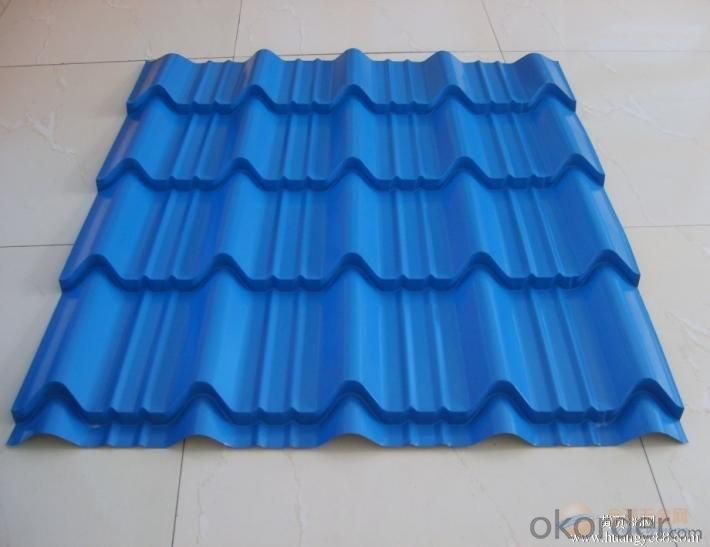
4.Pre-Painted Galvanized/Aluzinc Steel Coil Specification
| Standard | AISI, ASTM, BS, DIN, GB, JIS |
| Grade | DX51D, DX52D |
| Thickness | 0.17-2.0mm |
| Model Number | coil |
| Type | Steel Coil |
| Technique | Cold Rolled |
| Surface Treatment | Coated |
| Application | Roofing |
| Special Use | High-strength Steel Plate |
| Width | 20-1250mm |
| Length | customized |
| Commoidty | pre-painted galvanized steel coil |
| Thickness | 0.13-2.0mm |
| Width | 20-1250mm |
| Zinc Coating | 40-180g/m2 |
| Printing Thickness | top side: 20+/-5 microns, back side: 5-7 microns |
| Color | All RAL color |
| Surface Treatment | color coated |
| Coil Weight | 4-7 tons |
| Coil ID | 508/610mm |
| Packaging | standard seaworthy packing |
5.FAQ of Pre-Painted Galvanized/Aluzinc Steel Coil
1) What’s the application of this product?
Roof, roof structure, surface sheet of balcony, frame of window, etc.
2) What’s the brand of the paint?
We use the best brand of all of the word—AKZO.
3) How about your company?
A world class manufacturer & supplier of castings forging in carbon steel and alloy steel,is one of the large-scale professional investment casting production bases in China,consisting of both casting foundry forging and machining factory.
Annually more than 8000 tons Precision casting and forging parts are exported to markets in Europe,America and Japan.
OEM casting and forging service available according to customer’s requirements.
4) How to guarantee the quality of the products?
We have established the international advanced quality management system,every link from raw material to final product we have strict quality test;We resolutely put an end to unqualified products flowing into the market. At the same time, we will provide necessary follow-up service assurance.
5) How long can we receive the product after purchase?
Usually within thirty working days after receiving buyer’s advance payment or LC.
We will arrange the factory manufacturing as soon as possible. The cargo readiness usually takes 15-25 days, but the shipment will depend on the vessel situation.
- Q: What are the insulation properties of steel sheets?
- Compared to other commonly used insulation materials like fiberglass or foam, steel sheets have relatively poor insulation properties. This is because steel is an excellent conductor of heat and electricity, possessing high thermal conductivity. Consequently, steel sheets are ineffective in preventing heat transfer and are not typically used as standalone insulation materials. Nonetheless, steel sheets can still offer some insulation benefits when utilized alongside other insulating materials. For example, they can serve as a protective layer or cladding, enhancing the durability and fire resistance of insulation systems. Additionally, they can function as a radiant barrier, redirecting heat away from buildings and reducing heat gain in warm climates. To summarize, although steel sheets themselves do not possess exceptional insulation properties, they can contribute to improving overall insulation performance when combined with other insulating materials or applied in specific scenarios such as radiant barriers.
- Q: What are the different surface finishes for galvalume steel sheets?
- Some of the different surface finishes for galvalume steel sheets include regular spangle, minimized spangle, and zero spangle.
- Q: What are the different sheet metal folding techniques for steel sheets?
- There are several sheet metal folding techniques that can be used for steel sheets. These techniques are commonly employed in various industries, such as automotive, aerospace, and construction, to create complex shapes and structures. Some of the most common sheet metal folding techniques for steel sheets include: 1. Box and Pan Folding: This technique involves bending the sheet metal along multiple parallel edges to create a box-like shape. It is commonly used to create enclosures, cabinets, and trays. 2. Hemming: Hemming is a technique used to fold the edges of a sheet metal component to increase its rigidity and eliminate sharp edges. It is often used in the automotive industry for creating panels and body parts. 3. Brake Press Folding: A brake press is a machine tool that utilizes a hydraulic or mechanical press to bend the sheet metal. It allows for precise and accurate folding by adjusting the angle and depth of the bend. Brake press folding is one of the most commonly used techniques in sheet metal fabrication. 4. Roll Forming: Roll forming is a continuous bending process where the sheet metal is passed through a series of rollers to gradually shape it into a desired profile. It is suitable for creating long and continuous shapes, such as tubes and channels. 5. Rotary Folding: In rotary folding, a rotating tool is used to fold the sheet metal along a curved or circular path. This technique is often used to create rounded edges, curves, and cylindrical shapes. 6. Folding Machines: Folding machines are specifically designed to fold sheet metal by applying pressure along a predetermined line. These machines can be programmed to perform various folding operations, including simple bends, complex shapes, and multiple folds. Each of these sheet metal folding techniques has its advantages and limitations, and the choice of technique depends on factors such as the complexity of the design, required precision, and production volume. Skilled craftsmen and specialized machinery are often employed to ensure accurate and efficient folding of steel sheets.
- Q: How are steel sheets packaged for shipping?
- Steel sheets are typically packaged for shipping in a way that ensures their protection during transportation. The packaging process involves various steps to prevent any damage or deformation that may occur during transit. Firstly, the steel sheets are usually stacked on wooden pallets or placed in sturdy steel crates. This helps to provide a stable base and prevents any movement or shifting of the sheets during transportation. The use of pallets or crates also makes it easier to load and unload the sheets onto trucks or containers. To further protect the steel sheets from scratches or other forms of surface damage, they are often covered with a layer of protective material. This can include plastic wraps, paper or cardboard interleaves, or even a layer of oil or rust inhibitor. These protective materials act as a barrier between the steel sheets, preventing any direct contact that may cause scratches. Additionally, steel sheets may be bundled together with steel strapping or wire to keep them securely in place. This bundling process helps to maintain the structural integrity of the sheets and prevents them from shifting or sliding during transportation. Finally, once the steel sheets are properly packaged, they are typically labeled with relevant information such as product specifications, quantity, and destination. This ensures that the sheets can be easily identified and handled correctly at each stage of the shipping process. Overall, the packaging of steel sheets for shipping is carefully done to ensure their safe and secure transportation. By using pallets or crates, protective materials, bundling, and labeling, steel sheets can withstand the rigors of shipping and arrive at their destination in optimal condition.
- Q: Are steel sheets magnetic?
- Yes, steel sheets are magnetic because they are primarily made of iron, which is a ferromagnetic material.
- Q: Can steel sheets be used for elevator cabins?
- Yes, steel sheets can be used for elevator cabins. Steel is a common material choice for elevator cabins due to its strength, durability, and fire resistance properties. Steel sheets can be fabricated to create a sleek and modern look for elevator cabins, and they can also be easily customized to fit specific design requirements. Additionally, steel is a cost-effective option for elevator cabins as it is readily available and has a long lifespan.
- Q: Can the steel sheets be used for medical equipment?
- Indeed, medical equipment can make use of steel sheets. Steel's robustness, longevity, and resistance to corrosion render it a prevalent substance in the medical sector. It permits the production of an array of medical equipment, including surgical tools, hospital beds, medical trolleys, and diagnostic apparatus. Steel sheets can be conveniently shaped and crafted into diverse forms and dimensions, thereby catering to distinct requirements of medical equipment. Moreover, steel's hygienic attributes, facilitating easy sterilization, establish it as a fitting material for medical equipment necessitating regular sanitization.
- Q: Are steel sheets resistant to water or moisture damage?
- Yes, steel sheets are generally resistant to water or moisture damage due to their non-porous nature. However, prolonged exposure to water or moisture can lead to corrosion over time if the steel is not properly protected or coated.
- Q: What are the uses of steel sheets?
- Steel sheets have a wide range of uses in various industries such as construction, automotive, manufacturing, and aerospace. They are commonly used for building structures, roofing, walls, and foundations due to their strength and durability. Steel sheets are also utilized in the production of automobiles, appliances, machinery, and equipment as they provide a strong and lightweight material. Additionally, they are used for fabricating containers, storage tanks, and pipelines due to their resistance to corrosion.
- Q: What are the different types of steel sheet coatings?
- In the market, there exists a variety of steel sheet coatings, each possessing its own unique properties and advantages. Some of the most commonly utilized types are as follows: 1. Galvanized Coating: This coating is extensively employed for steel sheets due to its exceptional corrosion resistance and ability to prevent rust. It involves the application of a zinc layer onto the steel surface. Galvanized coatings find widespread use in outdoor applications such as roofing, fencing, and automotive parts. 2. Galvannealed Coating: Similar to galvanized coating, galvannealed coating also entails the application of a zinc layer onto the steel surface. However, in this process, the coated steel undergoes a high-temperature annealing process, resulting in the formation of an iron-zinc alloy coating. This type of coating offers improved paintability and weldability, making it ideal for applications that require subsequent painting or welding. 3. Aluminized Coating: Aluminized coatings involve the application of an aluminum layer onto the steel surface. This offers exceptional heat resistance and corrosion resistance, making it suitable for applications involving high temperatures, such as exhaust systems and ovens. Aluminized coatings also possess good reflectivity properties, which make them valuable for reflective insulation applications. 4. Organic Coatings: Several organic coatings, including epoxy, polyester, and polyurethane coatings, are available for steel sheets. These coatings are typically applied as paints or powder coatings and provide a protective layer that enhances the durability and appearance of the steel. Organic coatings can be tailored to offer specific properties, such as UV resistance, chemical resistance, or decorative finishes. 5. Tin Coating: Tin coatings are commonly utilized in the food packaging industry. They create a barrier between the steel sheet and the food product, preventing any interactions that could compromise the quality or safety of the food. 6. Other Specialty Coatings: Several other specialty coatings are available for specific applications. These include zinc-nickel coatings, which offer enhanced corrosion resistance, and ceramic coatings, which provide high-temperature resistance and excellent electrical insulation properties. In summary, the choice of steel sheet coating depends on the specific requirements of the application, such as corrosion resistance, heat resistance, or aesthetic appeal. It is crucial to carefully evaluate the properties of each coating type to ensure optimal performance and longevity of the steel sheet in its intended use.
Send your message to us
Pre-Painted Galvanized / Aluzinc Corrugated Steel Sheet Royal Blue
- Loading Port:
- Tianjin
- Payment Terms:
- TT or LC
- Min Order Qty:
- 50 m.t.
- Supply Capability:
- 10000 m.t./month
OKorder Service Pledge
OKorder Financial Service
Similar products
Hot products
Hot Searches
Related keywords

